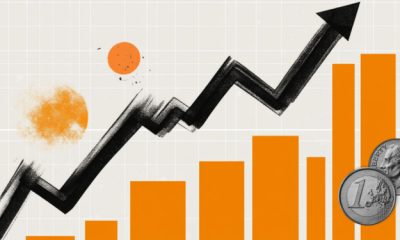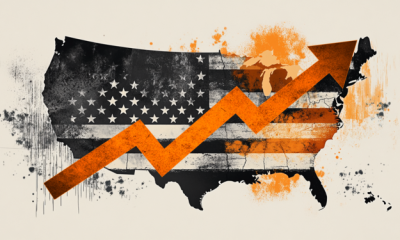

others
Core PCE inflation softens to 4.6% vs. 4.7% expected – Crypto News
Inflation in the US, as measured by the change in Personal Consumption Expenditures (PCE) Price Index, fell to 3.8% on an annual basis in May from 4.3% in April, the US Bureau of Economic Analysis reported on Friday. This reading came in below the market expectation of 4.6%.
The increase in the annual Core PCE Price Index, the Federal Reserve’s preferred gauge of inflation, edged lower to 4.6% from 4.7% in the same period, compared to analysts’ forecast of 4.7%. On a monthly basis, Core PCE inflation and PCE inflation rose 0.3% and 0.1%, respectively.
Further details of the report revealed that Personal Income increased by 0.4% on a monthly basis as expected and Personal Spending remained unchanged.
Market response
The US Dollar came under selling pressure with the initial reaction to soft inflation data. As of writing, the US dollar index was down 0.2% on the day at 103.14.
United States Personal Consumption Expenditures – Price Index (MoM)
The Personal Spending released by the Bureau of Economic Analysis, Department of Commerce is an indicator that measures the total expenditure by individuals. The level of spending can be used as an indicator of consumer optimism. It is also considered as a measure of economic growth: While the personal spending stimulates inflationary pressures, it could lead to rise interest rates. A higher reading is positive (or bullish) for the USD. Read more.
Next release: Friday July 28, 2023 12:30:00 GMT
Frequency: monthly
Source: US Bureau of Economic Analysis
The below section was published as a preview of the US PCE inflation report at 11:45 GMT.
- Personal Consumption Expenditures Price Index is expected to rise 4.6% on an annual basis in May.
- The Federal Reserve remains on track to return to a 25 basis point rate hike in July.
- US Dollar could gather strength against its rivals in case core PCE inflation remains hot.
The Core Personal Consumption Expenditures (PCE) Price Index report for May, the Federal Reserve’s (Fed) preferred inflation gauge, will be unveiled by the Bureau of Economic Analysis (BEA) on Friday, June 30 at 12:30 GMT.
How will the Federal Reserve read the PCE inflation report?
The PCE Price Index is forecasts to rise 4.6% on an annual basis in May, slightly stronger than the 4.4% increase recorded in April. The Core PCE Price Index, which excludes volatile food and energy prices, is expected to hold steady at 4.7% with a monthly increase of 0.4%.
The Federal Reserve (Fed) left its policy rate unchanged at the 5%-5.25% range following the June policy meeting. During the post-meeting press conference, the FOMC Chairman Jerome Powell explained that the pause in rate hikes did not necessarily mean that they have reached the terminal rate. In fact, the revised Summary of Economic Projections, the so-called dot plot, revealed that the interest rate projection for end-2023 got revised higher to 5.6% from 5.1% in March, implying two more 25 basis points (bps) rate hikes. this year.
While speaking at a policy panel at the European Central Bank Forum on Central Banking this week, Powell reiterated that a strong majority of Fed policymakers expected two or more rate increases this year and said that strong labor market conditions would allow them to continue to tighten the policies.
Currently, the CME Group FedWatch Tool shows that markets are pricing in a more than 80% chance of the Fed lifting the interest rate by 25 bps to 5.25%-5.5% in July. The probability of the policy rate reaching the 5.5%-5.75% range by December, however, is less than 30%.
The market positioning suggests that there is potential for the US Dollar (USD) to continue to gather strength on a hot PCE inflation report. Investors will likely pay close attention to the monthly Core PCE Price Index, since it is not distorted by base effects. A reading at or above 0.5% should increase the odds of two more 25 bps Fed rate hikes in the second half of 2023 and provide a boost to the USD. On the other hand, a soft print of 0.2% or lower should make it difficult for the US Dollar to stay resilient against its rivals ahead of the weekend.
When will the Personal Consumption Expenditure Price Index be released and how could it affect EUR/USD?
The PCE inflation report is scheduled for release at 12:30 GMT, on June 30. Previewing this publication, “the Federal Reserve watches PCE – so financial markets also examine it closely. The higher it goes, the greater the chance for further rate hikes and thus a stronger US Dollar. The Greenback would lose value against its peers on a lower read,” said FXStreet Analyst Yohay Elam.
EUR/USD gathered bullish momentum in June and climbed above 1.1000 before going into a consolidation phase. FX Street Analyst Eren Sengezer offers a brief technical outlook for the pair and explains:
“Following EUR/USD Lackluster performance this week, the Relative Strength Index (RSI) indicator on the daily chart declined to 50, highlighting a buildup of bearish momentum. Additionally, the pair was last seen trading near the 20- and the 50-day Simple Moving Averages (SMA) after having closed the last 10 trading days above those levels.”
Eren also highlights the important technical levels for EUR/USD: “In case the pair turns south on a strong PCE inflation report, a daily close below 1.0850 (50-day SMA, 20-day SMA) could attract sellers. In that case, additional losses towards 1.0800 (psychological level, 100-day SMA) and 1.0700 (end-point of May-June downtrend) could be witnessed.”
“On the upside, 1.1000 (static level, psychological level) aligns as strong resistance before 1.1060 (end-point of March-May uptrend) and 1.1100 (2023-high).”
PCE inflation related content
-

 Technology4 days ago
Technology4 days agoChatGPT users are mass cancelling OpenAI subscriptions after GPT-5 launch: Here’s why – Crypto News
-
Technology1 week ago
Binance to List Fireverse (FIR)- What You Need to Know Before August 6 – Crypto News
-

 Technology1 week ago
Technology1 week agoBest computer set under ₹20000 for daily work and study needs: Top 6 affordable picks students and beginners – Crypto News
-
Technology1 week ago
Beyond Billboards: Why Crypto’s Future Depends on Smarter Sports Sponsorships – Crypto News
-
Cryptocurrency1 week ago
Cardano’s NIGHT Airdrop to Hit 2.2M XRP Wallets — Find Out How Much You Can Get – Crypto News
-

 others1 week ago
others1 week agoBank of America CEO Denies Alleged Debanking Trend, Says Regulators Need To Provide More Clarity To Avoid ‘Second-Guessing’ – Crypto News
-

 Cryptocurrency1 week ago
Cryptocurrency1 week agoEthereum Hits Major 2025 Year Peak Despite Price Dropping to $3,500 – Crypto News
-

 Technology1 week ago
Technology1 week agoGoogle DeepMind CEO Demis Hassabis explains why AI could replace doctors but not nurses – Crypto News
-
Business1 week ago
Analyst Spots Death Cross on XRP Price as Exchange Inflows Surge – Is A Crash Ahead ? – Crypto News
-
others1 week ago
Pi Network Invests In OpenMiind’s $20M Vision for Humanoid Robots- Is It A Right Move? – Crypto News
-
Business1 week ago
Pi Network Invests In OpenMiind’s $20M Vision for Humanoid Robots- Is It A Right Move? – Crypto News
-

 De-fi1 week ago
De-fi1 week agoTON Sinks 7.6% Despite Verb’s $558M Bid to Build First Public Toncoin Treasury Firm – Crypto News
-

 De-fi1 week ago
De-fi1 week agoCircle Extends Native USDC to Sei and Hyperliquid in Cross-Chain Push – Crypto News
-
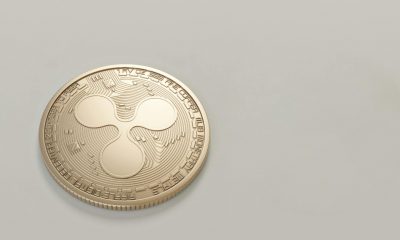
 Blockchain1 week ago
Blockchain1 week agoXRP Must Hold $2.65 Support Or Risk Major Breakdown – Analyst – Crypto News
-

 Blockchain1 week ago
Blockchain1 week agoXRP Must Hold $2.65 Support Or Risk Major Breakdown – Analyst – Crypto News
-
Business1 week ago
Is Quantum Computing A Threat for Bitcoin- Elon Musk Asks Grok – Crypto News
-

 Technology1 week ago
Technology1 week agoElon Musk reveals why AI won’t replace consultants anytime soon—and it’s not what you think – Crypto News
-
others1 week ago
Japan CFTC JPY NC Net Positions down to ¥89.2K from previous ¥106.6K – Crypto News
-

 Cryptocurrency1 week ago
Cryptocurrency1 week agoHow to Trade Meme Coins in 2025 – Crypto News
-

 others1 week ago
others1 week agoIs Friday’s sell-off the beginning of a downtrend? – Crypto News
-

 Technology1 week ago
Technology1 week agoOppo K13 Turbo, K13 Turbo Pro to launch in India on 11 August: Expected price, specs and more – Crypto News
-
Blockchain1 week ago
Shiba Inu Team Member Reveals ‘Primary Challenge’ And ‘Top Priority’ Amid Market Uncertainty – Crypto News
-

 Technology1 week ago
Technology1 week agoOpenAI releases new reasoning-focused open-weight AI models optimised for laptops – Crypto News
-

 Blockchain7 days ago
Blockchain7 days agoCrypto Market Might Be Undervalued Amid SEC’s New Stance – Crypto News
-

 Metaverse7 days ago
Metaverse7 days agoChatGPT won’t help you break up anymore as OpenAI tweaks rules – Crypto News
-

 De-fi6 days ago
De-fi6 days agoCoinbase Pushes for ZK-enabled AML Overhaul Just Months After Data Breach – Crypto News
-
Cryptocurrency4 days ago
DWP Management Secures $200M in XRP Post SEC-Win – Crypto News
-
others1 week ago
SharpLink Buys the Dip, Acquires $100M in ETH for Ethereum Treasury – Crypto News
-

 others1 week ago
others1 week agoVisa and Mastercard’s Payment Dominance Not Threatened by Stablecoins, According to Execs – Crypto News
-
Business1 week ago
Breaking: U.S. CFTC Kicks off Crypto Sprint, Explores Spot and Futures Trading Together – Crypto News
-

 Cryptocurrency1 week ago
Cryptocurrency1 week agoLido Slashes 15% of Staff, Cites Operational Cost Concerns – Crypto News
-
others1 week ago
MetaPlanet Launches Online Clothing Store As Part of ‘Brand Strategy’ – Crypto News
-

 Technology7 days ago
Technology7 days agoiPhone users alert! Truecaller to discontinue call recording feature for iOS from September 30. Here’s what you can do… – Crypto News
-

 Technology7 days ago
Technology7 days agoiPhone users alert! Truecaller to discontinue call recording feature for iOS from September 30. Here’s what you can do… – Crypto News
-

 others6 days ago
others6 days agoUS President Trump issues executive order imposing additional 25% tariff on India – Crypto News
-
Business6 days ago
Analyst Predicts $4K Ethereum Rally as SEC Clarifies Liquid Staking Rules – Crypto News
-

 De-fi6 days ago
De-fi6 days agoSEC Says Some Stablecoins Can Be Treated as Cash, but Experts Warn of Innovation Risk – Crypto News
-
Business6 days ago
XRP Price Prediction As $214B SBI Holdings Files for XRP ETF- Analyst Sees Rally to $4 Ahead – Crypto News
-
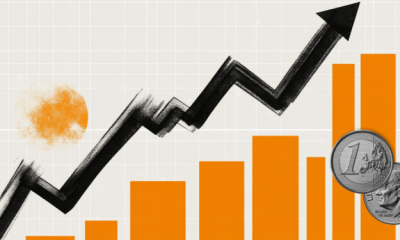
 others5 days ago
others5 days agoEUR firmer but off overnight highs – Scotiabank – Crypto News
-

 Blockchain5 days ago
Blockchain5 days agoTrump to Sign an EO Over Ideological Debanking: Report – Crypto News
-

 De-fi5 days ago
De-fi5 days agoRipple Expands Its Stablecoin Payments Infra with $200M Rail Acquisition – Crypto News
-

 others5 days ago
others5 days agoRipple To Gobble Up Payments Platform Rail for $200,000,000 To Support Transactions via XRP and RLUSD Stablecoin – Crypto News
-
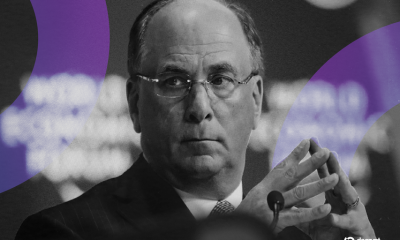
 Cryptocurrency4 days ago
Cryptocurrency4 days agoHarvard Reveals $116 Million Investment in BlackRock Bitcoin ETF – Crypto News
-

 Technology4 days ago
Technology4 days agoHumanoid Robots Still Lack AI Technology, Unitree CEO Says – Crypto News
-

 Technology1 week ago
Technology1 week agoAmazon Great Freedom Festival Sale 2025 vs Flipkart Freedom Sale: Comparing MacBook deals – Crypto News
-
Business1 week ago
India’s Jetking Targets 21,000 Bitcoin By 2032 As CFO Foresees $1M+ Price – Crypto News
-

 De-fi1 week ago
De-fi1 week agoCrypto Markets Stall as Trump’s Crypto Policy Report Fails to Spark Momentum – Crypto News
-

 Blockchain1 week ago
Blockchain1 week agoSharpLink Buys $54M in ETH, Holdings Reach $1.65B – Crypto News
-
Business1 week ago
Major U.S. Banks Now pushing “Chokepoint 3.0” to Kill Crypto: a16z Partner – Crypto News
-
others1 week ago
United States CFTC Oil NC Net Positions climbed from previous 153.3K to 156K – Crypto News

